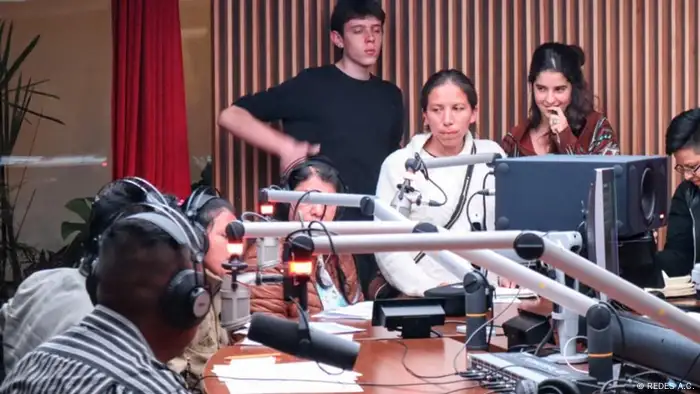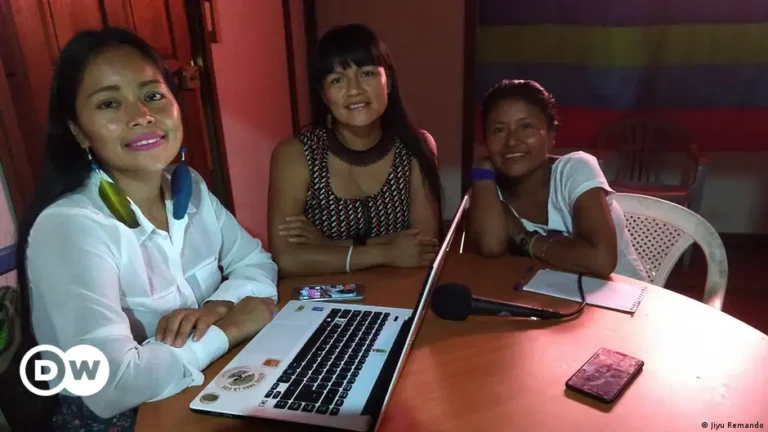If you are reading this article from the comfort of a laptop using high-speed Internet, you are part of a global minority. Most people around the world have to access the internet through unstable connectivity and on small-screen mobile devices.
Despite this, the global digital divide has been significantly reduced. When the United Nations (UN) first measured online connectivity in 2002, only one billion people worldwide had access. Today, that number has quintupled, but experts agree that providing the “other half of humanity” with meaningful connectivity will still be difficult. This includes reliable and diverse sources of information, as well as the opportunity to express yourself online. The overproportion of Western male content creators keeps the Internet in a rather biased environment. In other words, digital inclusion remains a challenge and solutions are urgently needed.
The connectivity problem
The most important annual gathering to address this global agenda is the Internet Governance Forum (IGF). After being mandated by the UN in 2005, representatives of governments, the private sector and civil society met for the first time the following year in Athens, Greece. Since then, the IGF has met regularly. On October 8, the IGF will meet again, this time in Kyoto, Japan. The question of how to create inclusive online environments has not lost its relevance over the years.
“Top-down business solutions for deploying connectivity in rural areas have failed in many countries in Africa, Asia and Latin America,” says Mike Jensen, a South African ICT expert working for the Association for Progressive Communication (APC). “Companies also struggle to meet the needs of marginalized groups – including refugees or displaced people – because their economic revenues do not fit the business models of large-scale centralized telecommunications systems.”
Communities create their own solutions
This is why many communities and local initiatives have taken matters into their own hands. “Community networks” emerged as interesting bottom-up approaches. They can be imagined as collectively owned Internet service providers or local digital networks, which connect diverse environments. These can range from remote villages in the Amazon region to informal townships in Cape Town to refugee shelters from Myanmar to India.

The REDES AC media is one of the hosts of the “Agents of Inclusion” meeting and supported the development of the open source software Colmena
Community media initiatives, once more tied to analog broadcasting, have also begun producing digital content in local languages and have successfully adapted formats, such as podcasts and digital storytelling, to encourage and preserve cultural diversity .
“It is online community media and local services that make connectivity meaningful for the local population,” confirms Sarbani Belur, researcher and advocate for inclusive internet technologies at the Institute for Social Entrepreneurship in Asia (ISEA). . “We have to show what matters and that things can be done differently,” she explains.
Working for inclusion at the IGF
The IGF will be a great stage to showcase such community-oriented ideas. In collaboration with the Mexican NGO REDES AC and ISEA, the DW Akademie will host the “Agents of Inclusion” meet-up on October 8, 2023 in Kyoto.
The hybrid session will highlight contributions to an inclusive internet, including local solar-powered servers, feminist podcasts, indigenous social media tools and Colmena, an open source writing application for community and local media organizations, designed to work both online and offline. DW Akademie is part of the emerging Colmena consortium and will facilitate the use of the digital newsroom for collaborative coverage of the IGF. So stay tuned for more news, produced with inclusive tools for a more inclusive Internet.
You can follow the IGF Day Zero session “Agents of inclusion: Community networks & media meetings” on Youtube or interact directly online as a registered participant.
Nils Brock is program director and trainer at DW Akademie for Colmena, open source software developed for portable newsrooms around the world that does not require a reliable internet connection. Colmena is a digital toolkit that allows local and community media to record, edit and broadcast their stories, for example via mobile phone. The free software was developed for different end devices, works offline and is available in six languages.


